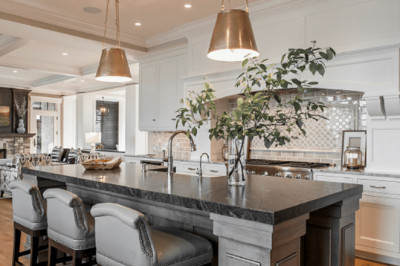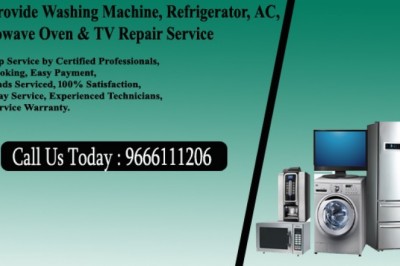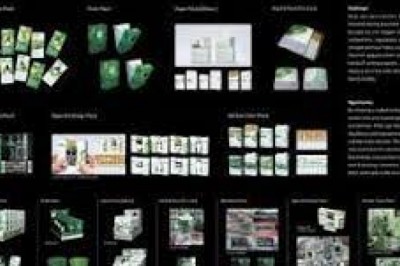views

B2B commerce has worked in the same way more or less over decades. While some of these processes have gone online, the operations are still time- and salesperson-intensive.
However, things are changing with visual CPQ and 3D product configuration. B2B customers want a more immediate and interactive process – and visual CPQ makes it all easy. Here’s how.
Visual CPQ- An Introduction
Visual CPQ stands for Visual Configure, Price, Quote. In practice, it is best represented as a 3D product configurator that lets customers configure, price, and generate custom quotes in real-time – while providing a detailed visual representation of your product to the customer.
V = Visual
The visual component of a CPQ system allows the customers to see what they're ordering before they make a purchase. It's particularly useful for manufacturers of highly customized products, that are becoming common in B2B commerce industries like biotech, building supplies, and high tech.
C = Configure
Most visual CPQ solutions have a drag-and-drop interface that guides customers through every step of available customizations. The resulting specifications get automatically included with the proposal and can then be pushed to the CAD system for production.
P = Price
Because a product is configured in real-time by the customer, the CPQ system automates the subsequent pricing process. It also gives a detailed bill of materials for the configured product.
Q = Quote
This is the final step of the visual CPQ process where the quote you generate is provided to the customer. The quote is auto-generated by the software, where you can also include detailed drawings, parts lists, warranty information, or other relevant information.
B2B Customer Experience Is Closing on B2C
B2B and B2C sales were significantly different a while ago. B2B commerce transactions were historically complex, taking place over a long period, and required considerable handholding from trained professionals.
B2C sales, in contrast, put more of the process in the hands of the customers, bringing in considerably quicker transaction times with less (or no) interaction with the salespeople.
B2B customers, habitual to experiencing streamlined B2C transactions in their personal lives, have now begun expecting “Amazon-like” buying experiences whenever they purchase for work too!
Here are a few attributes of how the B2B sales experience is now similar to the B2C experience.
Self-Service Buying
B2C customers carried their online research and made choices that were unaffected by pushy salespeople. B2B buyers are now increasingly willing to cut the sales reps to do their research as well as decision-making.
Forrester states that 60% of business buyers don’t want to interact with a sales rep as a primary source of their information; 68% like to do own their research online. This change in buyer behavior is exactly why more and more manufacturers are integrating a self-serving visual CPQ solution inside their B2B e-commerce platforms.
Instant Gratification
Buyers these days don’t get satisfied with lengthy B2B purchasing cycles. They want instant gratification and a hyper-quick sales process. Your company can get this with the adoption of visual CPQ solutions that provide quick quotes for specific purchase requirements.
Customized Products
Increasing B2B buyers are no longer satisfied with readymade solutions. They require products suited to their needs. A product visualization tool provides a convenient gateway to highly customized B2B products.
How Visual CPQ Changes B2B Commerce?
Visual CPQ is essential to meet the evolving needs and expectations of B2B buyers. How can visual CPQ revolutionize your organization's B2B commerce?
Generate Buyer Trust
Reading product specs and testimonials helps to build buyer trust, but seeing their customized products with their eyes is even better. Seeing a visual of the final product inspires confidence in the product that they will be receiving – and in the seller.
Closes More and Bigger Deals
The visuals created with 3D product configuration are very precise renderings of large and complex products. When customers visually inspect these product designs online in real-time, they get more comfortable in placing their orders. This confidence allows your company closing more deals – and, in many cases, increasing the average deal sizes too.
Reduces the Sales Process
Because highly accurate representations of their favorite products becomes a reality, B2B customers can finalize their buying decisions with enhanced pace. Instead of taking many weeks to go front and back with your sales staff with multiple product redesigns, any of the desired changes can be easily made in real-time.
Sales quotes also get quickly generated, complete with all the personalized options and proper pricing. This level of sales automation hugely streamlines the sales process, allowing your sales reps to close deals far more quickly.
Reduces Refunds and Rework
With customers involved in every step of the CPQ process, miscommunication and errors get highly reduced. This, in turn, reduces the product refunds and manufacturing rework. According to Forbes, the use of visual configurators by B2C retailers reduces online returns by 80%. B2B sellers achieve similar results.
Cuts Costs
A reduced sales cycle, lesser returns, and less rework combine together to deliver significant cost savings for B2B companies using visual CPQ. You can expect both your sales and manufacturing costs to get impacted positively.
Better Profits & Earnings
The bottom line is that visual CPQ assists you in closing more sales in less time. According to the Aberdeen Group, organizations that use the best-in-class CPQ solutions – including visual CPQ – achieve five times more growth in their revenue than other companies. The same study also says that companies using CPQ solutions can expect their net profit to increase by 4X over five years.
How to Choose the Best B2B eCommerce Platform for your Visual CPQ?
The best B2B commerce platforms have easy-to-implement and maintain 3D product configuration solutions. For example, KBMax offers a sophisticated rules-based CPQ platform for B2B companies that delivers intelligent 3D visualization technology. The KBMax 3D product configuration engine allows your customers to dynamically update their colors, sizes, components, and many other product features with a few intuitive clicks.
The KBMax product configurator gets easily embedded in your own or another external website so that customers get to configure, price, and purchase the highly complex products without the need of assistance from the sales staff. Submitted orders then get automatically sent to downstream teams and systems for manufacturing, assembly, and fulfillment.
Visual CPQ is a tried-and-tested part of major B2C retail sites. Now you can also employ visual CPQ to better serve the exact needs of your B2B customers.












